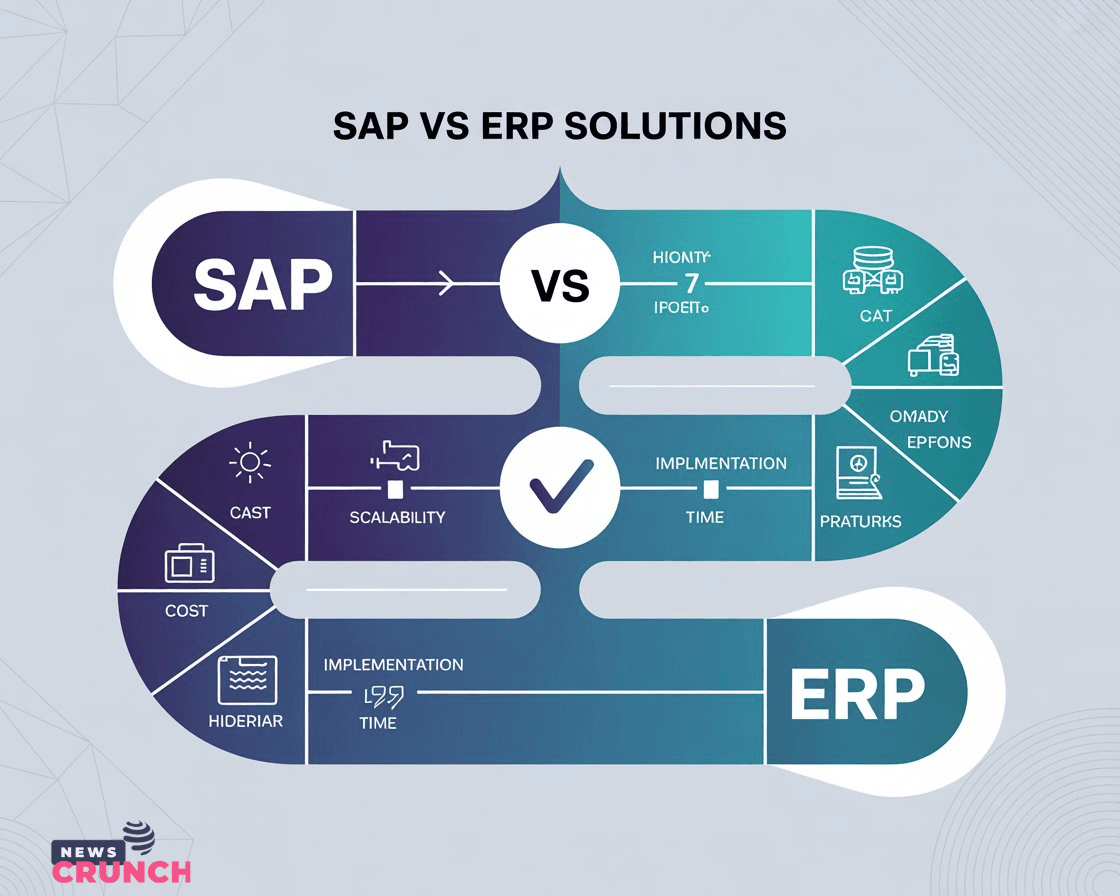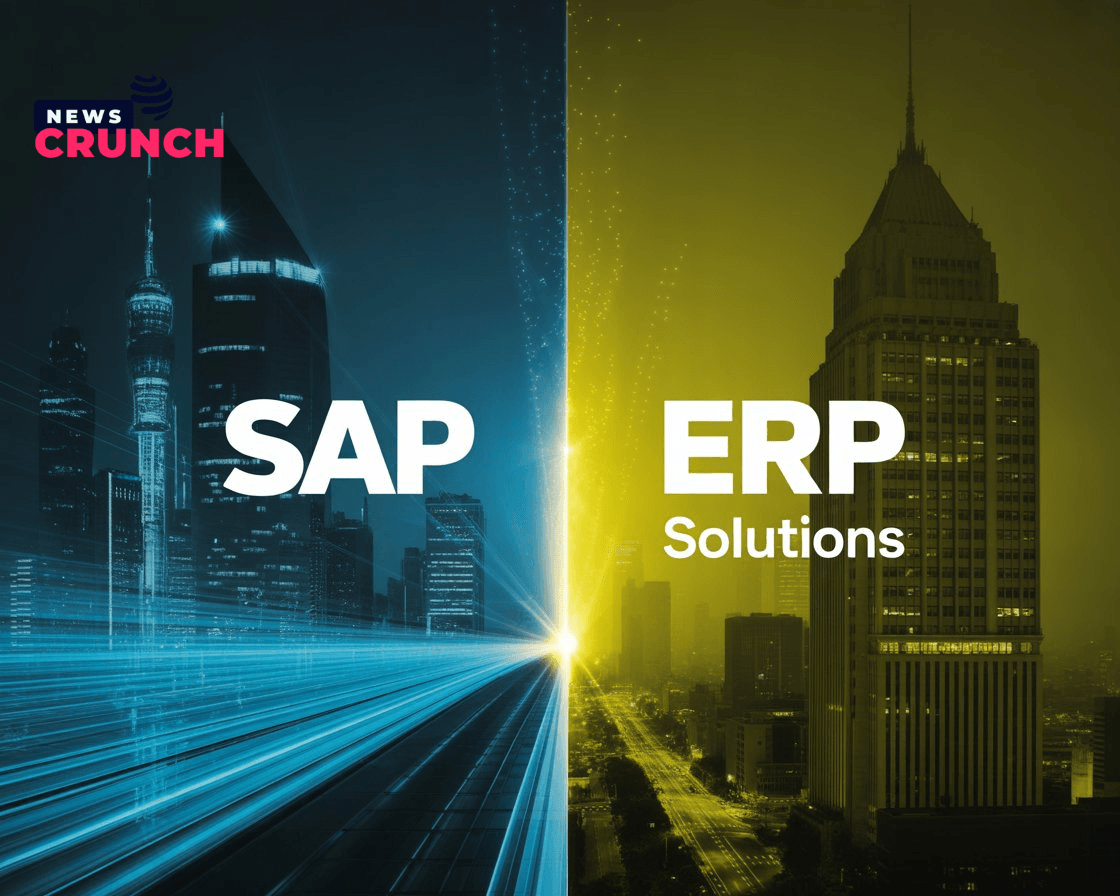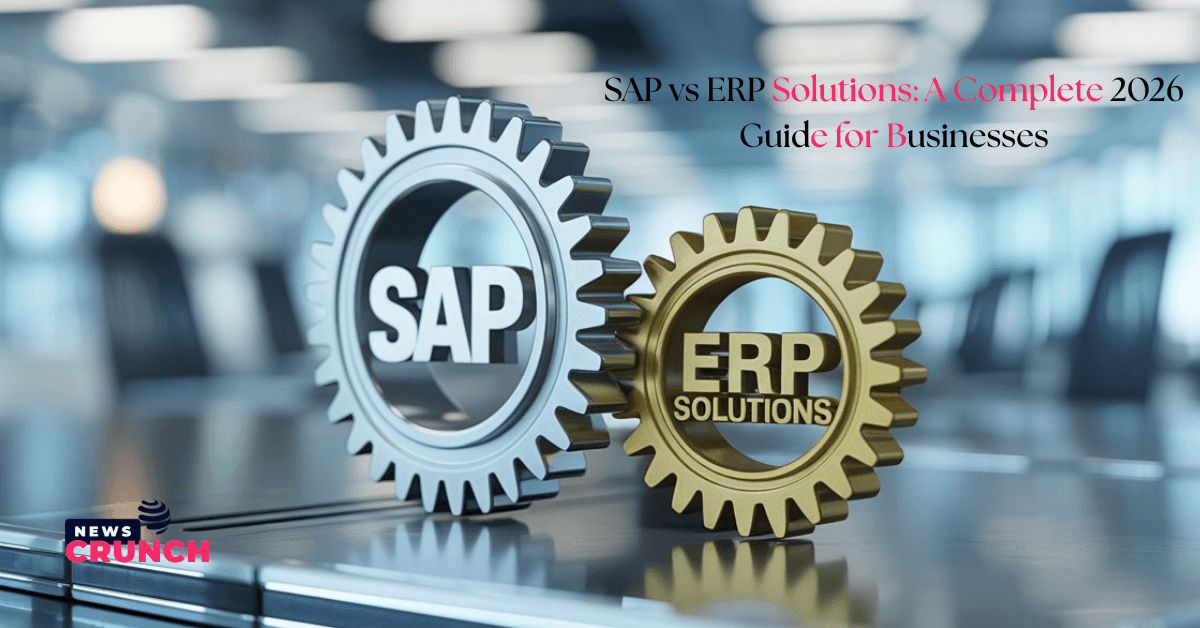What is ERP and Why Does It Matter?
Enterprise Resource Planning, or ERP, is a software category designed to unify all core business processes into one integrated system. Instead of using separate tools for finance, human resources, supply chain, customer management, and other operations, an ERP system provides a centralized platform where all information flows seamlessly. In the modern business environment, especially in the United States, companies handle increasingly complex operations. ERP solutions help streamline workflows, reduce manual errors, and improve department collaboration. Real-time data analytics allow decision-makers to respond quickly to changing market conditions, track key performance indicators, and optimize operations.
ERP also reduces operational costs. By integrating multiple business functions, companies can identify inefficiencies and eliminate redundancies. Employees no longer waste time managing disparate systems, allowing them to focus on strategic tasks. With mobile and cloud access, ERP ensures teams can access critical data anytime and anywhere, supporting remote work and multi-location operations.
Overall, ERP is more than just software; it is a strategic tool that enables businesses to grow efficiently, maintain compliance, and stay competitive. Understanding ERP’s capabilities is the first step toward a more innovative, data-driven organization for any business planning to scale operations in 2026.
Understanding SAP and Its Role in Business Management
SAP, short for Systems, Applications, and Products in Data Processing, is a leading ERP provider with global recognition. Unlike generic ERP software, SAP offers scalable industry-specific solutions for small, medium, and large enterprises. SAP ERP allows businesses to integrate finance, logistics, human resources, sales, and supply chain operations into a single platform. In the USA, companies across healthcare, manufacturing, retail, and logistics rely on SAP for robust analytics, compliance support, and operational efficiency. Features like SAP S/4HANA provide real-time data processing, enabling organizations to make faster, more informed decisions.
A key strength of SAP is its modular design. Businesses can implement only the necessary modules and expand functionality as requirements grow. SAP supports global operations with compliance tools, multi-currency management, and multilingual interfaces. Integration with AI, machine learning, and predictive analytics enhances operational insight and forecasting. Adopting SAP can be transformative, providing companies with a competitive edge. Businesses implementing SAP ERP efficiently experience smoother operations, reduced costs, better resource management, and improved employee productivity. SAP benefits organizations aiming for long-term scalability and digital transformation in 2026.
SAP vs ERP Solutions: Key Differences Explained
Choosing the right ERP solution is critical for business success. SAP is often compared with leading solutions like Oracle NetSuite and Microsoft Dynamics 365. While all these platforms are designed to streamline operations, differences in functionality, scalability, and pricing can influence the best solution. SAP ERP stands out for deep integration and industry-specific modules. It is particularly suited for large enterprises requiring robust compliance and analytics features. Oracle NetSuite is a cloud-first ERP system known for flexibility, ease of implementation, and strong financial management tools.
Microsoft Dynamics 365 integrates seamlessly with Microsoft products and is user-friendly, making it ideal for small to mid-sized businesses. Implementation complexity varies. SAP may require longer deployment times and higher investment, but offers extensive functionality. Oracle and Microsoft Dynamics often have faster deployment and lower upfront costs, but they may not provide the same depth in industry-specific features.
Comparison Table: SAP vs Oracle vs Microsoft Dynamics
| Feature/Criteria | SAP ERP | Oracle NetSuite | Microsoft Dynamics 365 |
| Scalability | Medium to large enterprises | All sizes | Small to mid-sized |
| Industry-Specific Tools | Extensive modules for multiple industries | Strong financial and e-commerce tools | General business processes |
| Ease of Use | Steeper learning curve | User-friendly, cloud-based | Very user-friendly |
| Integration | High integration with global systems | Cloud apps and finance tools | Best with the Microsoft ecosystem |
| Implementation Cost | Higher investment required | Moderate, subscription-based | Affordable for SMBs |
| Deployment Options | On-premise & cloud | Cloud only | Cloud & hybrid |
Choosing Between SAP and ERP: Which Fits Your Business Best?
Selecting SAP and other ERP solutions depends on business size, industry, budget, and long-term goals. Choose SAP if you are a medium to large enterprise with complex operations, need industry-specific modules, require global compliance, and plan for long-term scalability. Choose alternatives like Oracle or Microsoft Dynamics if you are a small to mid-sized business, require faster deployment, prefer lower costs, or need a solution focused on standard business processes.
In the USA, evaluating ERP options includes assessing integration capabilities, vendor support, and ROI potential. The right ERP solution helps streamline operations, improve efficiency, and support sustainable growth.
Significant Benefits of Implementing SAP ERP in 2026
Implementing SAP ERP in 2026 offers organizations a transformative approach to business management. One of the most significant advantages is end-to-end integration. SAP ERP combines finance, human resources, supply chain management, and customer relationship management into a unified platform. This allows departments to communicate seamlessly, share real-time data, and eliminate redundancy. For US-based companies, where efficiency and accuracy are critical, integrated operations reduce errors and improve decision-making across the organization.
Another key benefit is real-time analytics. Modern SAP ERP solutions, particularly cloud-based platforms like SAP S/4HANA, enable AI-driven insights and predictive analytics. Businesses can monitor trends, forecast demand, and respond to market changes proactively. Real-time dashboards allow executives to track KPIs instantly, enabling smarter, data-backed decisions that enhance performance and profitability.
Scalability is a significant factor for growing enterprises. SAP ERP is suitable for small, medium, and large businesses. Organizations can start with essential modules and gradually expand functionality as needs evolve. This flexibility ensures companies do not outgrow their ERP solution, making SAP a long-term investment.
Another critical benefit is regulatory compliance. SAP ERP supports local and international standards, ensuring businesses adhere to industry regulations, financial reporting requirements, and data security laws. This is especially valuable in highly regulated sectors like healthcare, finance, and manufacturing.
Automating repetitive tasks such as payroll, procurement, and reporting enhances productivity. Employees can focus on strategic projects rather than manual administrative work, reducing errors and saving time.
Finally, industry-specific modules make SAP ERP highly adaptable. Tailored solutions for sectors such as healthcare, retail, manufacturing, and logistics ensure that businesses receive features specific to their operational requirements. SAP ERP provides a comprehensive, efficient, and scalable solution that empowers organizations to stay competitive and agile in 2026.
Read Also: Top CRM Integration Partners
Essential Steps for a Successful SAP ERP Implementation
Successful implementation of SAP ERP requires a structured approach to ensure maximum value. The first step is planning. Businesses must set clear objectives and define desired outcomes before deployment. This includes identifying key performance goals, critical business processes, and expected ROI. A solid plan reduces risks and ensures the project aligns with organizational strategy.
The second step, requirement analysis, involves mapping current workflows, identifying bottlenecks, and documenting business needs. Understanding how departments operate and interact helps configure SAP modules to match real-world processes. This step is essential for avoiding costly rework and ensuring smooth adoption.
System configuration comes next. SAP ERP is highly customizable, and configuration ensures that modules like finance, HR, supply chain, and customer management meet the company’s specific requirements. Proper configuration enables seamless integration and avoids unnecessary complexity.
Data migration is a critical step. Legacy data from previous systems must be transferred securely into SAP, maintaining data integrity and consistency. Accurate data migration prevents operational disruptions and ensures reliable reporting and analytics once the system is live.
Next is testing, where the ERP system is validated for performance, accuracy, and compliance. Comprehensive testing identifies errors, allows adjustments, and ensures the system operates as expected under real business scenarios.
Training is vital for staff adoption. Employees must understand how to use the new system effectively. Structured training programs, workshops, and documentation facilitate smooth transitions and empower users to leverage the full capabilities of SAP ERP.
Finally, deployment and support involve going live with the system and continuously monitoring its performance. Post-deployment support ensures issues are resolved quickly, updates are applied, and the system evolves alongside the organization. Continuous monitoring and maintenance help maximize ROI and ensure long-term success.

Final Thoughts: SAP vs ERP for Modern Businesses
ERP systems will be essential for competitive businesses in 2026. SAP offers comprehensive, scalable solutions ideal for complex and regulated industries. Alternatives like Oracle and Microsoft Dynamics provide flexible, cost-effective options. Choosing the right solution depends on size, budget, and growth strategy. Investing in the right ERP system ensures operational efficiency, better decision-making, and long-term growth.
Frequently Asked Questions
Q1: What is the difference between SAP and ERP?
ERP is a category of business management software; SAP is a specific ERP system with advanced integration and industry-focused tools.
Q2: Is SAP an ERP system or something else?
SAP is a complete ERP system that integrates finance, HR, logistics, and more. It is scalable and has its industry-specific modules.
Q3: How does SAP ERP compare to other ERP software?
SAP excels in deep integration and industry specialization, while Oracle and Microsoft Dynamics offer faster deployment and flexible pricing.
Q4: How do you decide between SAP and other ERP solutions?
Before choosing, consider company size, budget, workflows, and strategic goals. Evaluate features, integration, and vendor support.
Q5: Is SAP ERP suitable for small businesses?
Yes, SAP offers tailored solutions for small to mid-sized businesses, but cost and implementation effort must be evaluated.
Q6: What are the main benefits of SAP ERP?
Streamlined workflows, real-time insights, compliance support, improved collaboration, and scalability for growing businesses.
Q7: What are the steps in SAP ERP implementation?
Planning, requirement analysis, configuration, testing, training, deployment, and ongoing support for optimal performance.






